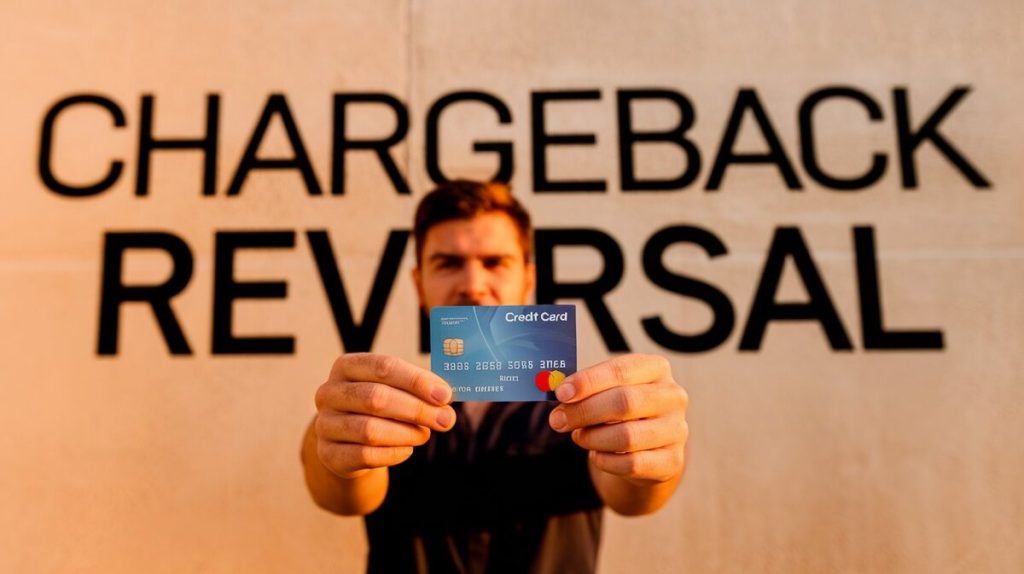Chargebacks can significantly impact businesses, particularly in e-commerce. A chargeback reversal allows merchants to recover funds taken due to customer disputes. This guide will explain chargeback reversals, why they’re important, and how to increase success rates using facts, industry data, and straightforward strategies.
What is a Chargeback Reversal?
A chargeback reversal occurs when a bank returns funds to a merchant after a customer disputes a transaction. This happens after the bank reviews evidence provided by the merchant, countering the customer’s claim. Reversing chargebacks is critical for merchants to recover funds and maintain a strong relationship with payment processors.
Chargeback Reversal Process
The process involves:
- Chargeback Notification: The merchant is informed of the chargeback and provided a reason code explaining the dispute.
- Evidence Submission: The merchant submits evidence, such as transaction records, communication logs, and shipping confirmations.
- Bank Review: The issuing bank reviews the evidence.
- Decision: The bank either upholds the chargeback or reverses it, returning the funds to the merchant.
Key Statistics
- Success Rate: Success rates for chargeback reversals range between 20% to 40%, depending on the quality of evidence and the reason for the chargeback.
- Common Chargeback Reasons: Mastercard reports that the most common chargeback reasons are fraud (58%), product not received (26%), and dissatisfaction with the product or service (16%).
Common Reasons for Chargebacks
Understanding why chargebacks occur helps in formulating an effective response. Common causes include:
- Fraudulent Transactions: Unauthorized use of card information.
- Merchandise or Service Not Received: Customer claims they did not receive what they paid for.
- Processing Errors: Errors such as duplicate charges or incorrect amounts.
- Dissatisfaction: Customer dissatisfaction with product quality or service.
Table 1: Breakdown of Chargeback Reasons
| Chargeback Reason | Percentage (%) |
|---|---|
| Fraudulent Transactions | 58% |
| Merchandise/Service Not Received | 26% |
| Processing Errors | 10% |
| Product Dissatisfaction | 16% |

Steps to Successfully Reverse a Chargeback
Step 1: Respond Promptly to Notifications
Responding quickly to chargeback notifications is crucial. Banks follow strict deadlines set by card networks like Visa and Mastercard. Missing a deadline typically results in a loss.
Step 2: Analyze Reason Codes
Each chargeback has a reason code explaining the dispute’s cause. These codes help determine the necessary evidence to contest the chargeback. Visa and Mastercard offer guides on reason codes, which are vital for understanding disputes.
Step 3: Gather Solid Evidence
Merchants must present strong evidence to reverse a chargeback, such as:
- Transaction Receipts: Proof the transaction was legitimate.
- Communication Records: Emails or chat logs showing customer satisfaction or delivery confirmation.
- Shipping Confirmation: Proof goods were delivered as promised.
Example: According to Checkout.com, transactions with digital delivery confirmations have a 35% higher reversal success rate compared to those without.
Step 4: Draft a Clear Rebuttal Letter
A strong rebuttal letter is essential for reversing a chargeback. This letter should:
- Be concise.
- Summarize the evidence.
- Reference the reason code.
- Avoid emotional or defensive language.
Step 5: Submit Evidence on Time
Delays in submitting evidence can lead to automatic denial. Digital tools can help streamline the submission process and ensure all documents are submitted within the allowed timeframe.
Step 6: Learn from Past Chargebacks
Analyzing previous chargebacks provides insights for future disputes. Understanding which types of evidence were successful can help improve strategies over time.
Table 2: Success Rate of Chargeback Reversals Based on Evidence Type
| Evidence Type | Success Rate (%) |
|---|---|
| Digital Receipts | 45% |
| Communication Logs | 50% |
| Shipping Confirmations | 60% |
| Rebuttal Letters | 35% |

Tools and Strategies for Effective Chargeback Management
Investing in chargeback management tools can significantly improve reversal success rates. These tools help automate the process, track disputes, and analyze trends.
- Chargeback Management Software: Automates evidence collection and submission.
- Customer Service: Proactive customer service can prevent chargebacks. Addressing customer issues promptly can avoid disputes.
Example: Merchanto.org, an official partner of Visa and Mastercard, offers advanced chargeback prevention tools that reduce chargebacks by up to 25%. These tools include real-time transaction monitoring and fraud detection systems. Learn more at Merchanto.org.
Table 3: Comparison of Chargeback Management Tools
| Tool Name | Features | Success Rate Improvement (%) |
|---|---|---|
| Chargeback Software | Automated evidence submission | 20% |
| Real-time Monitoring | Fraud detection and alerting | 25% |
| Customer Service | Proactive issue resolution | 15% |
Consequences of Ignoring Chargebacks
Ignoring chargebacks can have severe financial and reputational consequences:
- Financial Losses: Merchants can lose the transaction amount, pay chargeback fees, and bear the cost of lost goods or services.
- Increased Chargeback Ratio: High chargeback ratios can lead to fines or the loss of a merchant account. Visa requires merchants to maintain a chargeback ratio below 0.9% to avoid penalties.
- Reputation Damage: Persistent chargebacks can damage a merchant’s reputation with payment processors, leading to higher fees and stricter scrutiny.
Conclusion
Chargeback reversals are crucial for protecting your business from unjust financial losses. By understanding the process, gathering the right evidence, and using advanced tools, merchants can improve their success rates. Partnering with experts, which offers specialized chargeback prevention services, can further enhance your strategy. Follow the steps in this guide to safeguard your revenue and maintain a strong relationship with your payment processors.
Key Takeaways:
- Respond promptly to chargeback notifications.
- Understand and use reason codes to guide your evidence submission.
- Use robust evidence and a clear rebuttal letter to contest chargebacks.
- Learn from past chargebacks to improve future strategies.
- Utilize chargeback management tools and strong customer service to reduce disputes.
Protecting your business from chargebacks requires vigilance and proactive management. By implementing these practices, you can minimize losses and maintain a healthy, productive relationship with your payment processors.



